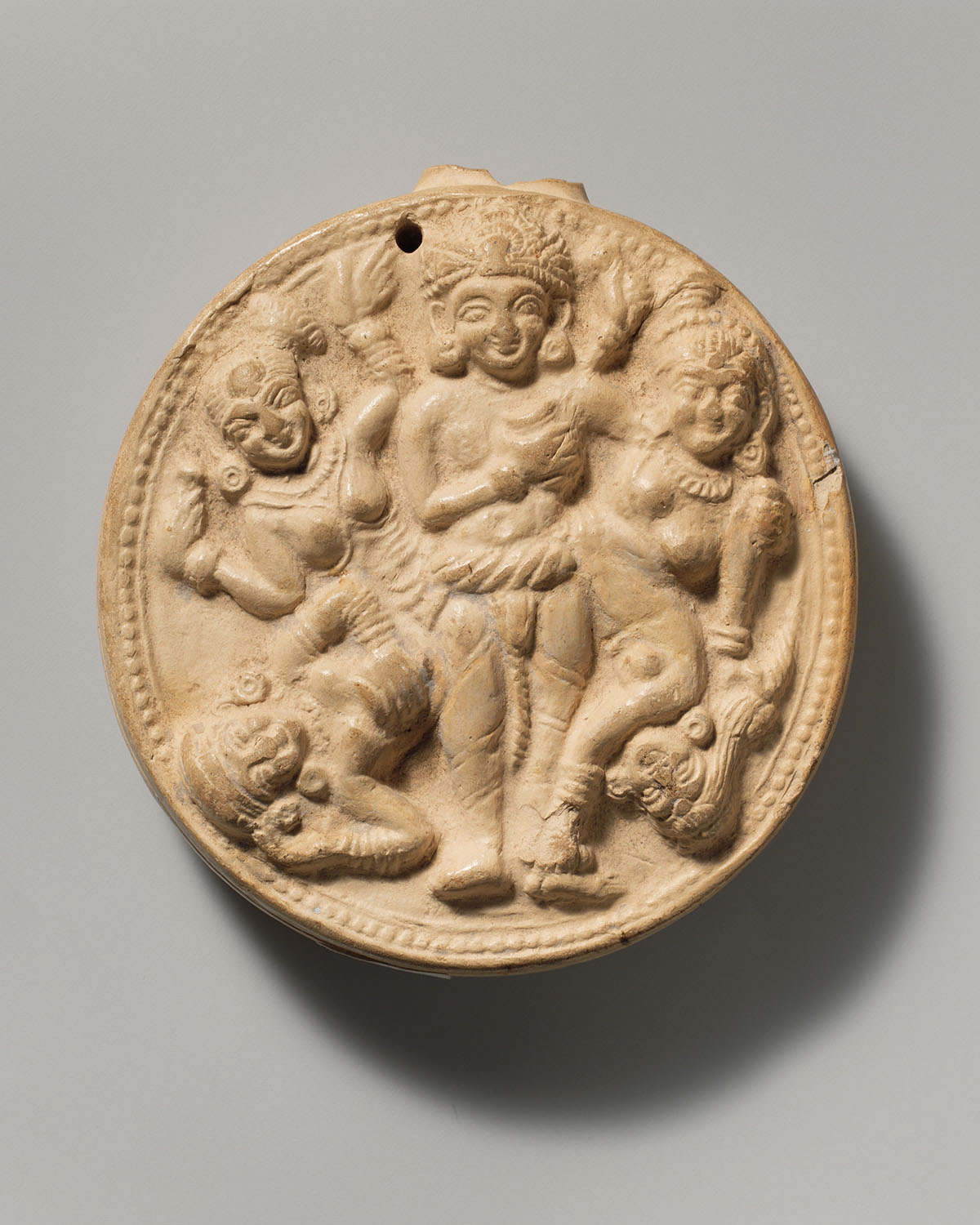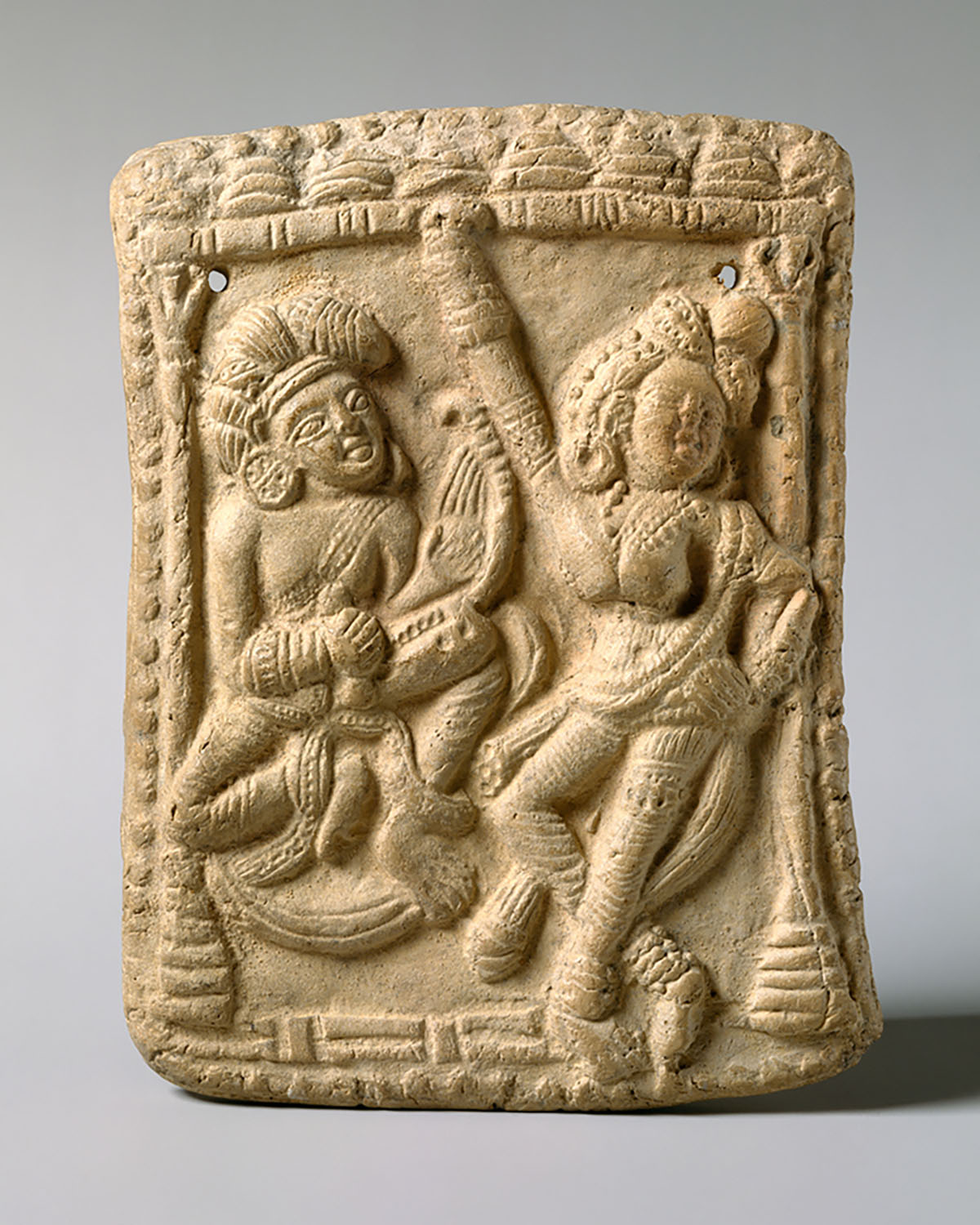ARTICLE
Shunga Terracotta Sculptures
A collection of terracotta figurines and plaques from the Shunga period that is dated to 187–78 BCE and was excavated from parts of present-day Bengal and Uttar Pradesh. These figurines, like the more monumental sculptural works near the Bharhut and Sanchi stupas, reflect a shift from the stylised and spare Graeco-Buddhist aesthetic to a more direct and descriptive indigenous style, marking the advent of a phase of great refinement in the Indian sculptural arts.
Terracotta sculptures from the Shunga period are a marked departure from their counterparts from the Mauryan era, during which hand-modelling was replaced by mould-forming — possibly due to an increased demand for terracotta objects and clay being more abundant and manipulable than stone. These objects are also all flat-backed or formed as plaques, with none being fully modelled or in the round, attesting to their mode of production. The figures depicted in these sculptures include yakshis, yakshas, nagas and other nature sprites and folk deities. It is possible that these representations are influenced by indigenous belief systems and populist visual idioms. The female figures, most abundant in the collection of terracotta sculptures, are particularly distinctive for their full-bodied and finely ornamented form, characterised by wide hips, languorous poses, and heavy adornment. The sculptural plaques, on the other hand, feature narrative compositions, familial scenes and religious iconography that were thematic of the prevailing culture.
The functional aspects of both the plaques and figurines are still unknown. Some scholars have proposed that they may have served as decorative objects like wall hangings (suggested by holes in some plaques), while others have proposed their use as votive offerings or tokens of personal faith, and in the case of the figurines, even as pull-toys. Although some scholars are of the opinion that terracotta objects from the Shunga period were an impetus to the monumental stone sculptures at Bharhut and Sanchi, contemporary comparisons of the two reveal that while the terracotta focuses on intricate surface details, later stone sculptures emphasise a more rounded form through contouring.
At the time of writing, many Shunga terracotta sculptures are housed in the public collections of the Metropolitan Museum of Art in New York, Dallas Museum, Musée Guimet in Paris, Allahabad Museum, Mathura Museum, the Indian Museum in Kolkata and the Patna Museum.
Bibliography
Our website is currently undergoing maintenance and re-design, due to which we have had to take down some of our bibliographies. While these will be re-published shortly, you can request references for specific articles by writing to hellomapacademy@map-india.org.








